Wage Garnishment: A Crucial Tool for Debt Collection
Introduction
In today’s economy, debt collection is a common occurrence. When debtors default on debts such as credit card bills, medical bills, or student loans, creditors may resort to wage garnishment as a means of collecting the debt. Wage garnishment is a legal process in which a creditor obtains a court order to collect a portion of a debtor’s income directly from their paycheck. Understanding the process, consequences, and implications of wage garnishment is important, as it can have serious implications for individuals facing financial hardships.
Body
1. What is Wage Garnishment?
Wage garnishment is a legal process that allows creditors to collect debts from a debtor's paycheck. It is typically used as a last resort when other attempts to collect the debt have failed. When a creditor obtains a court order for wage garnishment, a portion of the debtor's income is withheld by their employer and sent directly to the creditor. This process continues until the debt is fully paid off or a different arrangement is made.
2. How Wage Garnishment Works
The wage garnishment process begins with the creditor filing a lawsuit against the debtor. If the court finds in favor of the creditor, a judgment is issued stating the amount owed and granting the creditor the right to garnish the debtor's wages. The court will then notify the debtor's employer, who is legally obligated to comply with the garnishment order.
Once the employer receives the garnishment order, they will calculate the amount to be withheld from the debtor's paycheck based on the court's instructions. This amount is typically a percentage of the debtor's disposable income, which is the income remaining after deducting taxes and other necessary expenses.
The employer will then send the withheld amount to the creditor on a regular basis, usually every pay period. The garnishment continues until the debt is fully paid off or until a different arrangement is made between the creditor and debtor.
3. Notification Process
Before wage garnishment can begin, the debtor must be notified of the legal proceedings against them. This notification typically comes in the form of a summons or a court order. The debtor has the right to contest the garnishment in court, but they must do so within a certain timeframe.
It is important for debtors to carefully review any notifications they receive regarding wage garnishment and to seek legal advice if necessary. Understanding their rights and options is crucial in navigating the wage garnishment process.
4. Rights and Regulations
While wage garnishment is a powerful tool for creditors, there are also regulations in place to protect debtors. Federal and state laws limit the amount that can be garnished from a debtor's wages, ensuring that they have enough income left to cover basic living expenses. These laws vary from state to state, so it is important for debtors to familiarize themselves with the laws specific to their jurisdiction.
Debtors also have the right to receive a notice of the garnishment order, which should include information about their rights and options. They have the right to challenge the garnishment if they believe it is incorrect or unfair, and they have the right to request a hearing to present their case.
5. Implications of Wage Garnishment
Wage garnishment can have serious implications for individuals facing financial hardships. The most obvious consequence is a reduction in income, as a portion of the debtor's paycheck is withheld. This can make it even more difficult for debtors to meet their basic living expenses and may lead to further financial struggles.
In addition to the financial impact, wage garnishment can also have social and emotional consequences. It can be embarrassing and stressful for individuals to have their wages garnished, as it may signal to others that they are in financial distress. This can negatively impact their self-esteem and relationships.
Furthermore, wage garnishment can also impact a debtor's credit score. The fact that a debt has reached the point of wage garnishment will be reflected on their credit report, which can make it more difficult for them to secure future credit or loans.
6. Alternatives to Wage Garnishment
Fortunately, there are alternatives to wage garnishment that can help individuals facing financial hardship. One option is to negotiate a repayment plan with the creditor. This allows the debtor to pay off the debt in installments over time, without the need for wage garnishment.
Debtors can also explore debt consolidation or debt settlement options. Debt consolidation involves combining multiple debts into a single loan with a lower interest rate, making it easier to manage and repay. Debt settlement involves negotiating with creditors to settle the debt for less than the full amount owed.
7. Help from Financial Organizations
Navigating the wage garnishment process can be complex and overwhelming, but individuals do not have to face it alone. Financial organizations such as Wells Fargo can provide assistance and guidance in dealing with wage garnishment and other debt collection issues.
Wells Fargo, for example, offers resources and information on their website to help individuals understand their rights and options when it comes to wage garnishment. They also provide access to financial counselors who can offer personalized advice and support.
Conclusion
Wage garnishment is a powerful tool that creditors can use to collect outstanding debts. It is important to understand the process, consequences, and implications of wage garnishment in order to make informed decisions about debt repayment and financial responsibility. Fortunately, there are alternatives to wage garnishment that can help individuals facing financial hardship. Financial organizations such as Wells Fargo can provide assistance in navigating this complex process. By understanding their rights and exploring their options, individuals can take control of their financial situation and work towards a brighter future.




